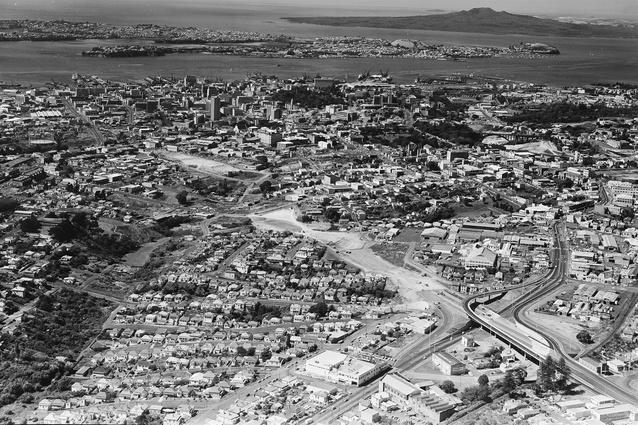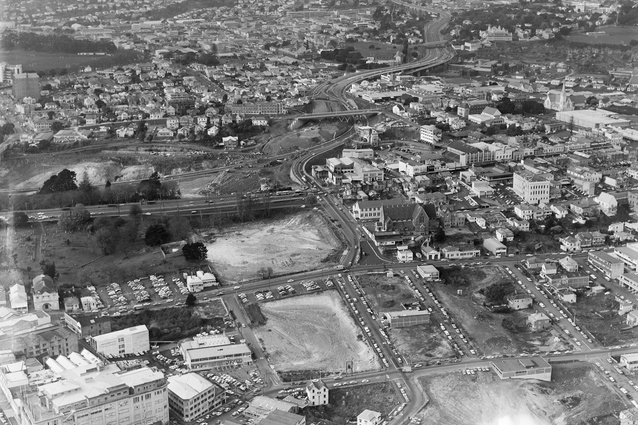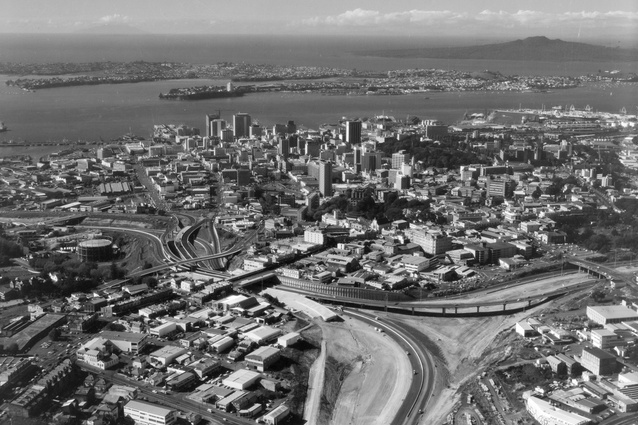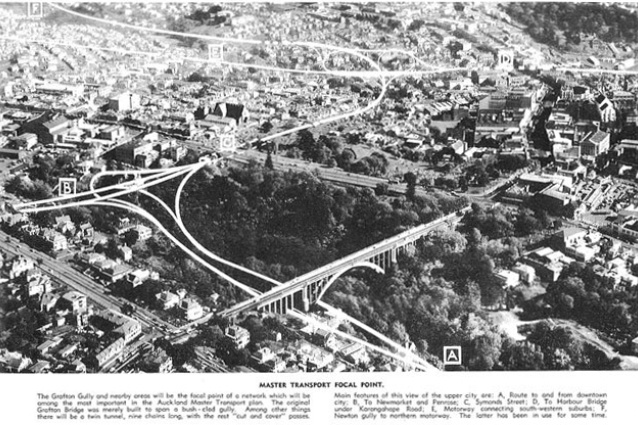Driving history
Patrick Reynolds muses on this alongside fantastic aerial photos, from the National Library’s Whites Aviation Collection, of the biggest urban motorway junction in Australasia under construction.
As Auckland again suffers insistence by central government that it knows what is best for the city, it is timely to look back at the extraordinary transformation this kind of Soviet-style central planning did to the city last century. We are all aware of the utility of this system when it is functioning, but are we really aware of its full cost? Apart from 50 years of continuous construction, it forced the removal of some 50,000 people and the destruction of around 15,000 buildings from its path, severing the central city from its inner suburbs. At the time this was presented as slum clearance but really it represents the privileging of the distant suburbs over the older centre, and of one type of movement over quality of place. Now, as the value of property in the remaining inner suburbs continues to rise, the loss of this land-use value (and rates income for Auckland Council) remains overlooked. It is important to remember that this totally auto-dependant solution was neither inevitable nor the only option, but a result of policy and central government dominance. Vancouver is good example of a city that chose, in this same period, to spend less on urban highways and invest in public transit systems instead.
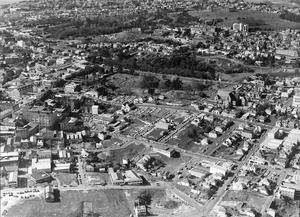
1966
Site clearance already beginning in anticipation of SH1 being shoved right through town. You can see why Karangahape Road was such a successful shopping precinct – direct connection with its community. Plus of course being at the heart of the well-used tram network.
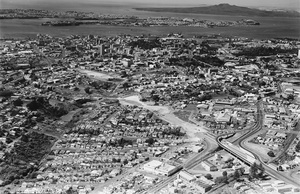
1968
Auckland City used to just flow into its surrounding inner suburbs. As seen above, they started with arguably the daftest part of the whole plan: the massively over-engineered Dominion Road/New North Road flyover. Some engineer was allowed to get more that a little carried away that day. Ah, brave new world.
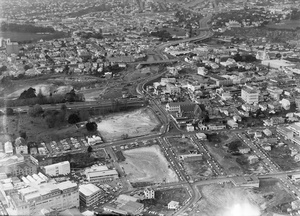
1969
Work begins – check out the on-street parking. You’ve got to park somewhere if this is the only mode you invest in. This is a big additional but uncalculated cost in an auto-dependent city, especially in low-value land use and increased building costs. The system was sold to the people of Auckland as a much less invasive and largely underground network, but the central planners instead built the more massive above-ground network we now enjoy.
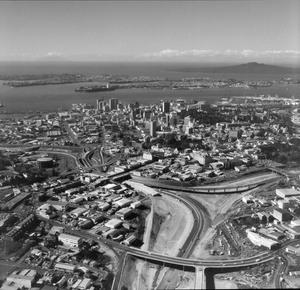
1979
The full CMJ sandpit. The severance of the CBD from its inner suburbs and the total destruction of Newton is now complete. K’ Road and Newton have never recovered commercially despite desperate attempts to play along with the auto game by spending on car parking buildings.
What are we left with? All our movement eggs in one increasingly fragile basket and a fine monument to central planning. This whole effort was planned and built by government apparatchiks in Wellington, immune to any input from locals, including local elected officials. It is important to remember that we have built this system at least twice over – without pausing to invest in any complementary systems of movement. As the recent drama over the closure of the Wellington St on-ramp shows, it’s already a marginally dysfunctional system. For comparison’s sake, two tracks of the proposed City Rail Link have an equivalent capacity of 10 lanes of motorway and, because it can unlock the latent, but currently out-of-reach capacity in the existing extensive rail right-of-way (from Pukekohe to Swanson), building this link is our best hope of keeping the CMJ, with its already-massive financial investment, flowing. It’s also our only hope of returning some level of quality of place and vitality to the wider city.
This article is a reprise of a story first published at www.transportblog.co.nz


